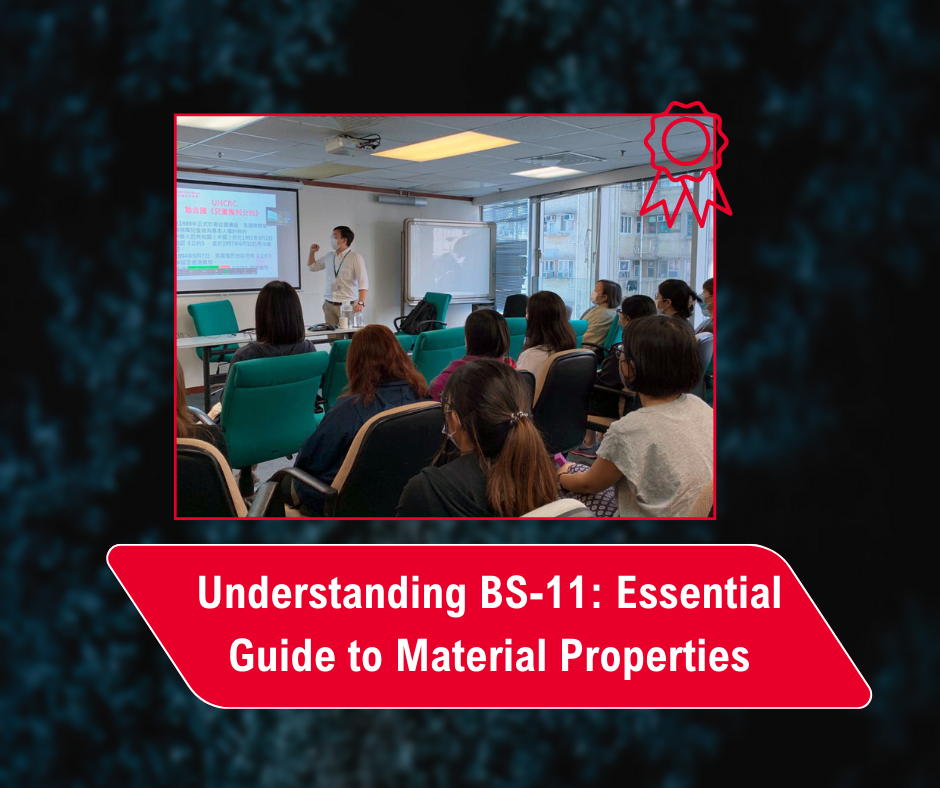Understanding BS-11: Essential Guide to Material Properties
In the dynamic fields of engineering, manufacturing, and construction, selecting the right materials is vital to ensuring safety, performance, and longevity. The British Standard 11 (BS-11) is a crucial framework that provides guidelines for assessing the essential properties of materials used across various applications. This article will explore the significance of BS11, delve into the key properties of materials it encompasses, and highlight its importance in professional practices. By the end of this guide, you will have a comprehensive understanding of how to implement its standards effectively.
What is BS-11?
BS-11, or British Standard 11, is a specification that outlines the essential properties and testing methods for various materials used in engineering and construction. It provides a framework for assessing material characteristics to ensure safety, reliability, and performance in real-world applications. By adhering to standards, professionals can ensure that the materials they select meet the required specifications and quality.

Key Properties of Materials in BS-11
BS-11 covers a range of material properties that are critical for engineers and designers. Understanding these properties helps in making informed decisions regarding material selection for specific applications. Here are some of the key properties highlighted in BS11:
1. Mechanical Properties
Mechanical properties refer to how materials respond to external forces. Key mechanical properties include:
- Tensile Strength: This measures a material’s resistance to being pulled apart. Higher tensile strength indicates a material can withstand greater forces without breaking.
- Yield Strength: This is the stress at which a material begins to deform permanently. Knowing the yield strength is essential for preventing structural failures.
- Hardness: Hardness indicates a material’s resistance to deformation and wear. It is vital for applications where durability is crucial.
2. Thermal Properties
Thermal properties relate to how materials respond to heat. Important thermal properties in BS-11 include:
- Thermal Conductivity: This measures how well a material can conduct heat. Materials with high thermal conductivity are ideal for applications requiring efficient heat transfer.
- Specific Heat Capacity: This property indicates how much energy a material can store per unit mass for a given temperature increase. It is crucial for thermal management in engineering designs.
3. Electrical Properties
Understanding the electrical properties of materials is essential for electronic and electrical engineering. Key electrical properties include:

- Electrical Conductivity: This measures how well a material can conduct electricity. Conductors like copper have high electrical conductivity, while insulators like rubber have low conductivity.
- Dielectric Strength: This is the maximum electric field a material can withstand without breakdown. It is essential for insulating materials in electrical applications.
4. Chemical Properties
Chemical properties relate to how materials react with other substances. BS11, emphasizes the importance of assessing:
- Corrosion Resistance: This property indicates how well a material can resist chemical degradation. Materials with high corrosion resistance are ideal for harsh environments.
- Reactivity: Understanding a material’s reactivity helps predict how it will behave when exposed to different chemicals, ensuring safety and longevity in applications.
5. Physical Properties
Physical properties are fundamental characteristics that define a material’s appearance and structure. Key physical properties include:

- Density: This measures the mass of a material per unit volume. Understanding density is crucial for weight calculations and material selection.
- Porosity: This refers to the amount of void space within a material. High porosity can affect strength and durability.
Importance of BS-11 in Material Selection
1. Safety and Compliance
BS-11 provides guidelines that ensure materials meet safety standards. By following these guidelines, engineers can minimize risks associated with material failures, protecting both people and property.
2. Quality Assurance
The BS-11 standards help in maintaining quality across materials used in construction and manufacturing. Ensuring that materials meet these standards enhances the overall quality of the final product.
3. Efficiency in Design
Understanding material properties as outlined in BS11, allows engineers to design more efficient structures and products. By selecting the right materials for specific applications, they can improve performance while reducing costs.
4. Research and Development
BS-11 serves as a reference for research and development in materials science. Understanding the properties and behaviors of materials enables innovations and advancements in technology.
How to Implement BS-11 Standards
To effectively implement BS-11 standards in practice, follow these steps:
1. Training and Awareness
Ensure that all team members understand BS-11 standards and the significance of material properties. Conduct training sessions and workshops to build expertise.
2. Material Testing
Incorporate testing methods outlined in BS-11 to evaluate materials. This includes mechanical, thermal, electrical, and chemical tests to ensure compliance with standards.
3. Documentation
Maintain thorough documentation of material properties and testing results. This helps in tracking compliance and making informed decisions in future projects.
4. Continuous Improvement
Stay updated with any revisions and incorporate them into your practices. Continuous improvement ensures that your material selection process remains robust and relevant.
Applications of BS-11 in the Industry
The principles outlined in BS11 are applied across various industries, including:
Construction: Engineers and architects utilize BS11 to select appropriate materials for buildings, bridges, and infrastructure projects, ensuring safety and longevity.
Manufacturing: In manufacturing, understanding material properties allows for optimized production processes, improving product quality and performance.
Automotive: The automotive industry relies on BS11 to select materials that provide safety, durability, and fuel efficiency.
Aerospace: In aerospace applications, material properties are critical for ensuring lightweight structures that can withstand extreme conditions
Utilizing Exams Solutions for Mastery of BS-11
For students preparing for exams related to material properties, such as the PEO exams, using resources like Exams Solutions can be invaluable. These solutions offer practice exams, study guides, and materials that align with BS11 standards, allowing students to grasp complex concepts and prepare effectively for their assessments. By focusing on the essential elements of material properties outlined in BS11, students can enhance their understanding and improve their exam performance.
Benefits of Using Exams Solutions
- Structured Learning: Exams Solutions provides a structured approach to learning, making it easier for students to follow along and understand key concepts related to BS-11.
- Practice Tests: Access to practice tests enables students to apply their knowledge, helping to identify areas where further study may be needed.
- Expert Guidance: With resources developed by industry professionals, students can benefit from insights and tips that enhance their understanding of material properties.
FAQ
What does BS-11 stand for?
BS-11 stands for British Standard 11, which outlines specifications for assessing material properties in engineering and construction.
Why is BS-11 important?
BS-11 is important because it ensures safety, quality, and performance in material selection, reducing the risk of material failures in engineering applications.
What types of properties does BS-11 cover?
BS-11 covers the mechanical, thermal, electrical, chemical, and physical properties of materials, providing a comprehensive guide for material assessment.
What resources can assist students in mastering BS-11 concepts?
Exams Solutions offers practice exams, study guides, and materials aligned with BS-11 standards, providing students with the tools they need for effective preparation.
Where can I find BS-11 standards?
BS-11 standards can be obtained from the British Standards Institution (BSI) website or other authorized standard organizations that provide access to engineering standards.
Conclusion
Understanding BS-11 and its guidelines for material properties is essential for professionals in engineering, construction, and manufacturing. By familiarizing yourself with the key properties outlined in, and implementing its standards in your projects, you can ensure safety, quality, and efficiency in your material selection process. Whether you are designing structures, manufacturing products, or conducting research, serves as a critical resource for achieving excellence in material properties. Embracing this standard not only enhances your knowledge but also equips you to tackle the challenges of modern engineering effectively.
Explore our courses today and take the first step towards acing your exam with confidence and expertise

